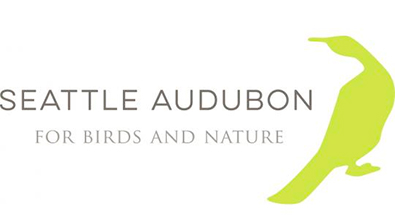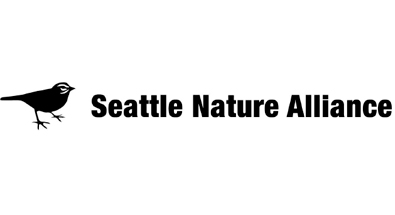- About
- Our Work
- Projects
- Get Involved
- Resources
- The Master Plan
- Maps
- Birds of Discovery Park
- The Wolf Tree Nature Trail
- Historic District Loop Tour
- 500 Area Loop Tour
- Ecosystem Affordances
- Importance of Ecological Services
- Monitoring Discovery Park Bluff Retreat
- Before & After
- 1936 to 2018
- Olmsted’s Legacy
- West Point Weather & Tide
- Park Feedback Form
- Discovery Park Gallery
- Blog
NO MUSIC CAMPUS IN DISCOVERY PARK!
“…what each of us does in the next two or three weeks could affect the life of this city for many, many years to come.”
– Seattle Attorney Donald Voorhees, first Chairman of Friends of Discovery Park, to the citizens of Seattle in 1968
“It is not something we would support … just want to clarify.“
– Seattle Parks and Recreation Superintendent, Jesús Aguirre
Countless groups have proposed subdivision of Discovery Park into separate uses: golf courses, correctional facilities, a music and arts campus, and more. Dedicated citizens recognized the value of this land as an open space, and it’s tranquility is even more valuable today. It is up to us to preserve the vision.

The proposed campus’s footprint would exceed the West Point waste water treatment plant that already hangs on the side of the park along its beach.
The authors of the Master Plan foresaw all this. As they wrote,
“In the years to come there will be almost irresistible pressure to carve out areas of the Park in order to provide sites for various civic structures or space for special activities. There will in the future be structures and activities without number for which, it will be contended; this Park can provide an ‘ideal site’ at no cost. The pressures for those sites may constitute the greatest single threat to the Park. They must be resisted with resolution.”
There exists, within Discovery Park presently, facilities that are ready and capable to house arts programs, although they could not serve a dedicated center. The Discovery Park Visitor and Environmental Learning Center and The United Indians of All Tribes Foundation Daybreak Star Center already provide these amenities. These buildings physically reside in harmony with Discovery Park on the outlying periphery close to bus routes, parking, and walking or ADA access. It is contrary to the park Master Plan and the stated policy of the City to develop precious open space and wildlife habitat for a new active campus, especially when there are several other places in the region where it could be conveniently, and compatibly, located.
“Development in Seattle is accelerating at a a reckless pace. We must ensure that our ecological ethics outweigh the wants of a few select people to profit wildly from a natural community resource.” – Mitchell Brasch
Discovery Park represents the largest city park and largest open space in a large, booming city becoming more dense by the week. There is no realistic prospect of ever adding a space of similar size inside the city should this one be whittled away by development. Although it is by no means a “pristine” wilderness, Discovery Park is dominated by undeveloped, natural space and contains several distinct ecosystem types representative of the region, from rocky tide pools to sandy beaches to moss-draped forest, to boggy wetlands, to wildflower-spangled meadow. From its highest vantage points, one can take in an unobstructed view of both local mountain ranges—the Cascades and the Olympics.
The park is especially important for lower income Seattle residents, who may not be able to easily access the large natural areas outside the city due to the expense and the need for a car. All you need to transport yourself to the park’s green and peaceful landscape is to hop the #33 bus from downtown.
- Seattle does not need a competing music and arts campus in the center of Discovery Park.
- Seattle does need large natural public space, and we must protect what remains for generations to come.
- These passions and intentions are better served strengthening similar and existing facilities around Seattle. Ones that are already operational and welcome the attention and help.

“As an original member of the Citizens for Fort Lawton Park—now known as the Friends of Discovery Park—the League of Women Voters of Seattle-King County has long considered Discovery Park to be a crown jewel of our magnificent parks system. We ask that the City of Seattle preserve this 554-acre treasure by declining to develop Fort Lawton Center for the Arts at Discovery Park.”

Open Season on Open Space – “The need for a place of respite, of peace and quiet—one that serves the entire city rather than a small constituency—simply outweighs the benefits of a more narrowly conceived program, no matter how laudable its intentions. And as the thousands of visitors who regularly use the park to commune with nature can attest, there is already music there: the biophony of a rich array of wildlife—including more than 270 species of birds—that would otherwise be disrupted and drowned out by concerts and other performances.”

“Seattle Audubon respectfully requests that Seattle City Parks and Recreation decline to authorize the Fort Lawton Center for the Arts at Discovery Park as the Center’s development is not reflective of Discovery Park’s Master Plan. …its current proposed location would increase vehicular traffic, attract hundreds or potentially thousands of people for large concerts and result in development within the heart of Discovery Park, eroding some of its important natural values.”

“An arts campus is incompatible with the natural qualities that make Discovery Park so special—and so beloved. A campus would mean increased vehicle access, crowds, noise, lighting, paved areas, and other amenities, and would have significant impact on the park. An Arts Center could be built anywhere, but natural areas are irreplaceable.”

“Seattle’s citizens have consistently reaffirmed the critical importance of the Master Plan in preserving Discovery Park’s unique and irreplaceable role as an oasis of tranquility and biodiversity for all to enjoy. The Discovery Park Advisory Council joins the Friends of Discovery Park, the Seattle Audubon Society, Seattle’s Nature Alliance, The Cultural Landscape Foundation, and citizens and organizations across the Puget Sound region in firm support of the Park’s Master Plan and uncompromising opposition to this latest flawed attempt to develop Seattle’s largest remaining public open space.”
“Discovery Park is my escape from city life. And although I am an artist and fully support the arts, I also feel there is a therapeutic and essential need for “wild” green spaces for everyone, not just for those who are able to drive themselves to a distant trailhead or nature preserve outside the city limits. Discovery Park is perfect. Don’t mess with perfection, please. It is a tonic for urban dwellers with little time or means to rejuvenate their souls in Mother Nature.”
– Lisa Downey
Allied Arts of Seattle, American Institute of Architects, Seattle Chapter, Associated Clubs of North End, Choose and Effective City Council (CHECC), Citizens Planning Council, Federation of Western Outdoor Clubs, Isaak Walton League, Junior League of Seattle, League of American Wheelmen, League of Women Voters, Magnolia Community Club, National Parks Association, Seattle Audubon Society, Seattle Garden Club, Seattle Junior Chamber of Commerce, Seattle King County Board of Realtors, Seattle Board of Park Commissioners, Seattle Planning and Redevelopment Council, Seattle Rhododendron Society, The Mountaineers, The Sierra Club, Puget Sound Group, The Wilderness Society, Washington Alpine Club, Washington Roadside Council, and Congressional Delegates including: Senator Henry M. Jackson, Senator Warren G. Magnuson, Congressman Brock Adams, Congressman Lloyd Meeds, and Congressman Thomas Petty

COMMUNITY LETTER IN RESPONSE TO A PROPOSED MUSIC CAMPUS WITHIN DISCOVERY PARK
We the undersigned, a diverse group of Discovery Park advocates, have recently been made aware of a new and potentially existential threat to Discovery Park, concerning enough to warrant us to come together and make a joint statement on why this project would be so injurious to the long-term integrity of the Park. Although we come from a variety of backgrounds, we are all united and uncompromising in opposition to what we believe is a deeply flawed idea.
A group of citizens, led by a single individual, is making a serious proposal to build a large educational music and arts campus, the Fort Lawton Center for the Arts, within the legally protected Fort Lawton Historic District. As proposed, this facility would utilize the 8 currently vacant buildings there, to provide “year round education programs…K-12 music education, dance studios, rehearsal and master class workshops, summer camps and lodging”. The plan would fully renovate and modernize all 8 buildings to provide lodging, dining, classrooms, practice and performance facilities and recording studios. They publicly state they are very serious about this idea and are intent on seeing it to completion.
We are strongly opposed to this proposal for the following reasons.
1) It is in direct conflict with the 1972 Discovery Park Master plan that reads: “In the years to come there will be almost irresistible pressure to carve out areas of the park in order to provide sites for various civic structures or space for special activities. There will in the future be structures and activities without number for which, it will be contended, this park can provide an “ideal site” at no cost. The pressures for those sites may constitute the greatest single threat to the park. They must be resisted with resolution. If they are not, the park will be so fragmented that it can no longer serve its central purpose.”
2) It breaks with the 1986 Development Plan which states “The intent of the plan is that the nature and use of the Historic District shall be compatible with the primary role of Discovery Park – to provide an open space of quiet and tranquility.”
3) Such a music school would clearly result in increased urbanization of the Park and dramatically reduce the Historic Districts “quiet and tranquility”. Despite reassuring words about the use of shuttle buses, we do not see these as realistic for such an active music campus and feel that dramatically increased vehicular traffic into the center of the Park would be inevitable, requiring the permanent opening of Oregon Avenue, Nebraska Street and Idaho Avenue on the north campus, plus the portions of Iowa Street and Washington Avenue that are near the Chapel on the south campus. All of these streets are currently gated and locked, allowing only pedestrian access and permitted park maintenance vehicles.
4) Noise pollution is a real and constant threat to the peace and quiet of the Park and the well being of its wildlife. The sound generated by brass and percussion instruments is substantial and carries a long way, especially in the quiet environment of Discovery Park. Amplified music would be even more disruptive. Although this proposal implies that only acoustic classical music would be practiced and performed, we are concerned that even louder, amplified music would be allowed, especially given the size of performances that are being proposed.
5) The 8 historic buildings are currently intended to stand as symbols to remind us of the Park’s historic military past, and have no power, water, septic or communication lines. They were designed and built over 100 years ago when modern heating, plumbing and disabled person standards did not exist. To convert them to modern educational facilities that conform to current building codes as well as the mandates of the Federal and City Historical registries, especially with all the features and activities proposed, would be very expensive. If such expenditures were made, there would be great pressure to use the campus to its maximum capacity.
6) The proposal suggests that the City of Seattle has been derelict in its duty to preserve these buildings – that they are “crumbling” and “falling down”. This is incorrect. They are structurally sound and, with the exception of some peeling paint and rare siding that needs replacement, are in good condition. The Seattle Park Department has done its job in maintaining these buildings as stipulated in the 1986 agreement. This agreement was arrived at only after extensive debate and deliberations before the Seattle Landmarks Preservation Board over several days, which ranged from advocacy for restoration of the buildings for income production, to their complete removal. The decision was to maintain these 8 buildings as weather protected “Silent Sentinels” which would celebrate the 1900 era military history of Fort Lawton. We continue to believe this is the most prudent, reasonable and cost-effective way to manage these buildings.
7) This project would demand a complicated and long term commitment from the Park Department. It would require entering into a legally binding agreement with an organization (The Fort Lawton Center for the Arts) that does not currently exist, proposed by individuals with no previous experience in running such a complex educational facility. Such an arrangement would expose the City to a significant liability and attendant legal costs.
8) The authors of this proposal have stated unequivocally that they are only interested in the Historic District of Discovery Park and are not willing to consider other locations such as the former Army Reserve Center in the far northeast corner of the Park, or other reasonable options elsewhere in the City.
9) This does not appear to be an effort with citywide benefit at its core. The website suggests that this project would “help reduce the geographic isolation of Magnolia.” The majority of its backers are Magnolia residents. It seems to us, that this project is intended to primarily help Magnolia and its arts community, and does not therefore support the mission of the Park which is to serve as a Regional Park and provide quiet open space for all of Seattle’s residents.
Finally we recognize that many do not understand the primary purpose of the Park or understand why the empty buildings in the Historic District exist at all. We recognize this would be a good time to have that discussion and would be happy to participate. Discovery Park and its open space represents a unique and invaluable asset to the citizens of Seattle, primarily by providing a place of quiet and tranquility. We believe the peace and solitude provided for by the Park far outweighs the benefits of a music campus. If such a campus were developed in the center of the Park, it would irreversibly impact both the Park’s wildlife and human visitors for generations to come.
Signed:
The Friends of Discovery Park Board
Peter Ker Walker, co-author of Discovery Park Master Plan
Wes Uhlman, mayor of Seattle, 1970-1978.
Mike Ruby, past president of the Sierra Club – Seattle Chapter.
Gary Gaffner, past president of the Discovery Park Advisory Council
Heidi Carpine, past president of the Magnolia Community Council
Paul Broadhurst, award winning Seattle landscape architect
Paul Bannick, award winning author and wildlife photographer
Rod Brown and Catherine Conolly
and thousands more like you who love and support the integrity of Discovery Park.


